Introduction
The purpose of this leaflet is to provide you information about hip osteoarthritis and how to best manage it, especially in situations where a hip replacement is not currently indicated or feasible.
What is hip osteoarthritis (OA)?
Osteoarthritis is the most common form of arthritis and the hip is a commonly affected joint. A joint is a part of the body where two bones meet. The ends of the bones in a joint are covered in a smooth and slippery surface known as cartilage. This allows the bones to move easily against each other and protects the bones from stress. There is a ball and socket joint between the pelvis and thigh bone, which is the hip joint.
Osteoarthritis causes the cartilage in your hip joint to thin and the surfaces of the joint to become rougher, which means that the hip does not move as smoothly as it should (Figure 1).
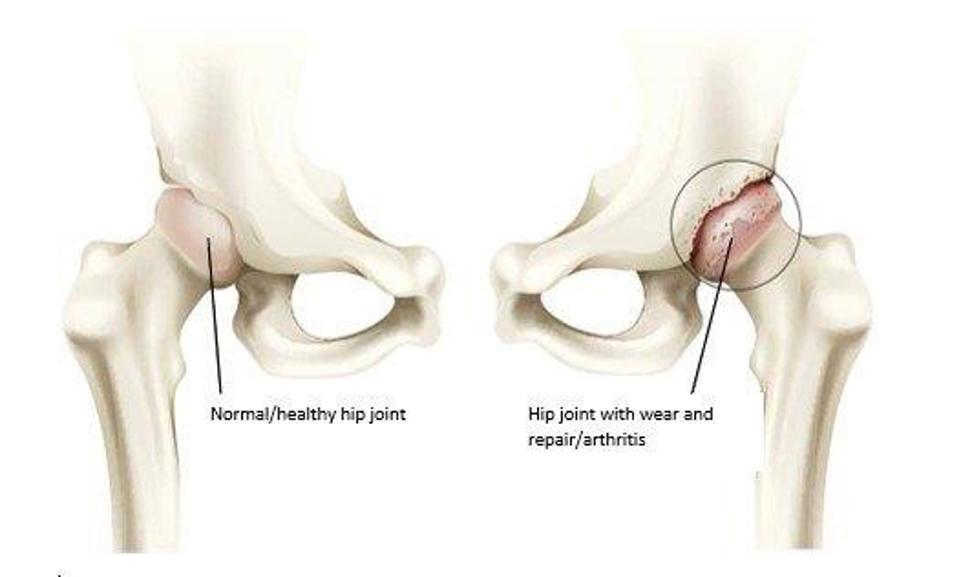
Figure 1 Front view of hip joint. A normal/health hip joint and hip joint with wear and repair/arthritis
What are the symptoms?
These vary from person to person and you may experience:
- Pain, especially in the groin area and or pain referred to the knee
- Stiffness, especially in the morning and after sitting for a while
- Discomfort (but not unrelenting pain) overnight in certain positions
- Some people find hip pain can make you limp or waddle slightly when walking
- Sometime people can feel a sharp catching pain that causes a sensation of the leg giving way.
What are the causes?
Joints go through a normal cycle of damage and repair during our lifetime. Sometimes the body’s process to repair our joints can cause changes in their shape or structure. When these changes happen it is known as osteoarthritis.
Osteoarthritis is more common in people over the age of 50. Women tend to be more affected by hip osteoarthritis than men. Previous injury such as fractures or surgery can lead to osteoarthritis developing. Being overweight is also linked to osteoarthritis especially in large weight bearing joints such as the hip.
How is it diagnosed?
Hip osteoarthritis is diagnosed through a clinical examination and by the signs and symptoms you report. An x-ray may be used to confirm and assess the changes in the hip.
Should I have an x-ray or scans?
An x-ray is commonly used to assess hip osteoarthritis. A Magnetic Resonance Imaging (MRI) scan is not normally required.
What is the prognosis?
Most people will experience ongoing symptoms. However a diagnosis of hip osteoarthritis does not necessarily mean a continued deterioration in the joint or progressive pain. It is also important to note that changes on an x-ray may not correlate with the pain that a person may experience.
Self-care, advice and exercise should help you cope with and manage your symptoms. It will often take around 3 to 6 month of exercise participation to see improvement.
Is hip osteoarthritis serious?
Hip osteoarthritis can be very painful and affect your ability to take part in activities, but is rarely serious.
What are the treatment options?
There is evidence that exercise may benefit symptoms of osteoarthritis. Joints need to move and exercise to keep them healthy. Whatever your fitness level, exercise can help the hip to be able to cope with normal daily activities.
If pain is a problem consult your GP or pharmacist to get advice on pain medication.
Depending on your past medical history, your GP may prescribe Non-steroidal Anti-Inflammatory Drugs (NSAIDs).
If symptoms have become unmanageable then surgery may be an option. You would be referred to an Orthopaedic Surgeon, buy your GP or healthcare professional to discuss any surgical options.
What can I do myself to help manage my symptoms?
Advice to help improve symptoms:
- Try to remain active and stay at work even if you have to modify your duties.
- Strengthening and stretching the muscles which support the ankle, knee, hip and back.
- Going for walks, cycling or swimming can also help reduce pain and improve your mobility and general health.
- Weight loss decreases the load on the joints and has been shown to significantly reduce pain.
- A warm bath, is still able can help ease the discomfort.
How can physiotherapy help?
Your physiotherapist will provide a programme of exercises to help maintain your hip range of movement and build up the muscle strength around your hip joint.
Sometimes you may experience an increase in your pain, with or without warning. If you experience flare-ups, you need to reduce your day to day activities and frequency/intensity of physiotherapy exercises to lessen the overall load placed on the hip. Most people recover quickly from flare-ups by pacing, activity modification and by taking appropriate painkillers. It is also vital you provide adequate time for the muscles to recover and do not push through the pain and avoid sudden increase in the intensity of the exercises.
It is very important that you have an active role in the management of your condition and work with your physiotherapist to help improve your condition.
How often should I do these exercises?
Stretching
There is no exact stretching time that works for everyone. Current evidence suggests stretching for 30 to 60 seconds in total may be optimal. This could be one or two sets of 30 second holds or three sets of 20 seconds.
It is, however, best to start with one or two stretches held for 10 seconds or so and gradually build this up to between 30 and 60 seconds. Stretching can feel uncomfortable, but should not feel painful during or after the exercise.
Rehabilitation Exercises
Try to do these exercises once a day on the majority of days. It is important to have rest days, especially if you are not used to exercising regularly. It is acceptable to break the exercises into groups and complete these at different times in the day. Try and do the exercises on both sides, if able and not aggravating your pain.
Start with one set of 5 to 10 repetitions. As the exercise becomes easier you can either gradually increase the repetitions or add another set of exercises. A total of 45 repetitions would be a maximal effort i.e. 3 sets of 15 repetitions. Take a rest of up to a minute between each set. Ideally the muscle(s) you are exercising should begin to feel fatigued by the end of the exercise however you should not be straining. It is normal to have some discomfort during exercises as long as it’s acceptable to you.
As you increase the repetition of exercises you should try to have a rest day after each exercise day to allow your muscles to recover.
Rehabilitation Exercises
Aims:
- Minimise pain
- Regain full range of movement of the hip
- Increase muscle strength.
- Restoration of normal walking pattern
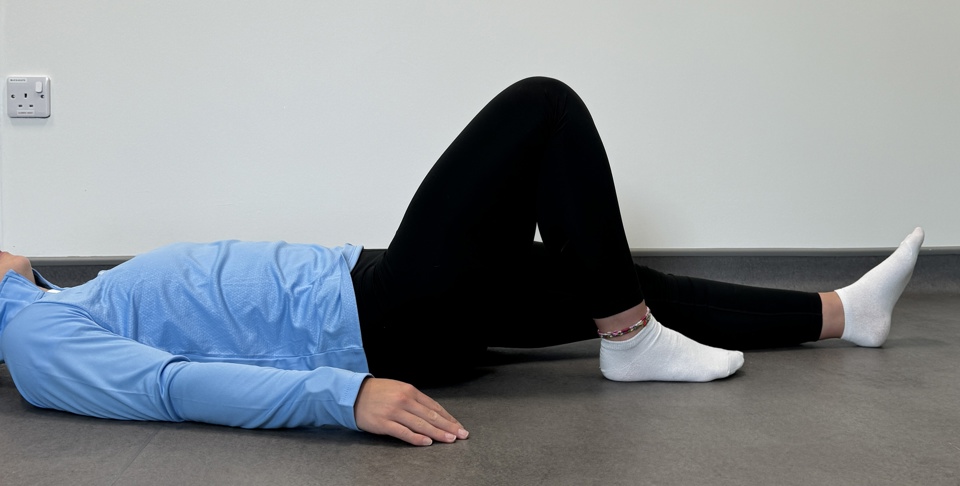
1. Hip/Knee Flexion Slides
Sit with a towel under one foot.
Bend and straighten your knee by sliding your foot along the floor or on a smooth piece of board on your bed.
Alternately you can do this in sitting whilst sliding the foot along the floor
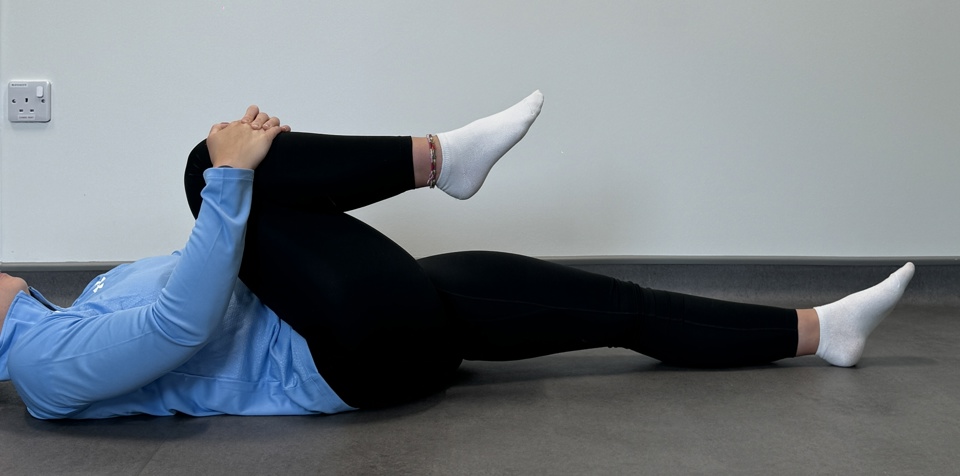
2. Hip Flexion Progression
Bend one knee towards your chest, helping with your hands. Keep your other leg on the floor.
Hold seconds 20 to 30 seconds.
Repeat times 3 times.
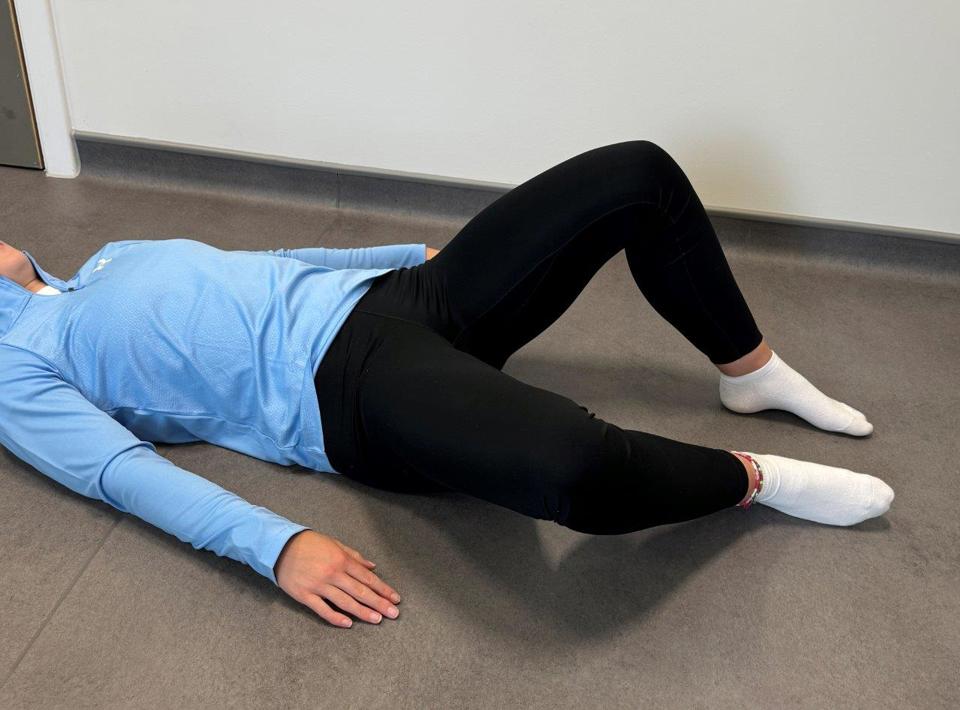
3. Hip External Rotation
Turn the soles of your feet to face each other and allow your knees to fall outwards. Feel the stretch in your groin. Keep your back flat on the floor during the exercise.
Hold seconds 20 to 30 seconds.
Repeat times 3 times.
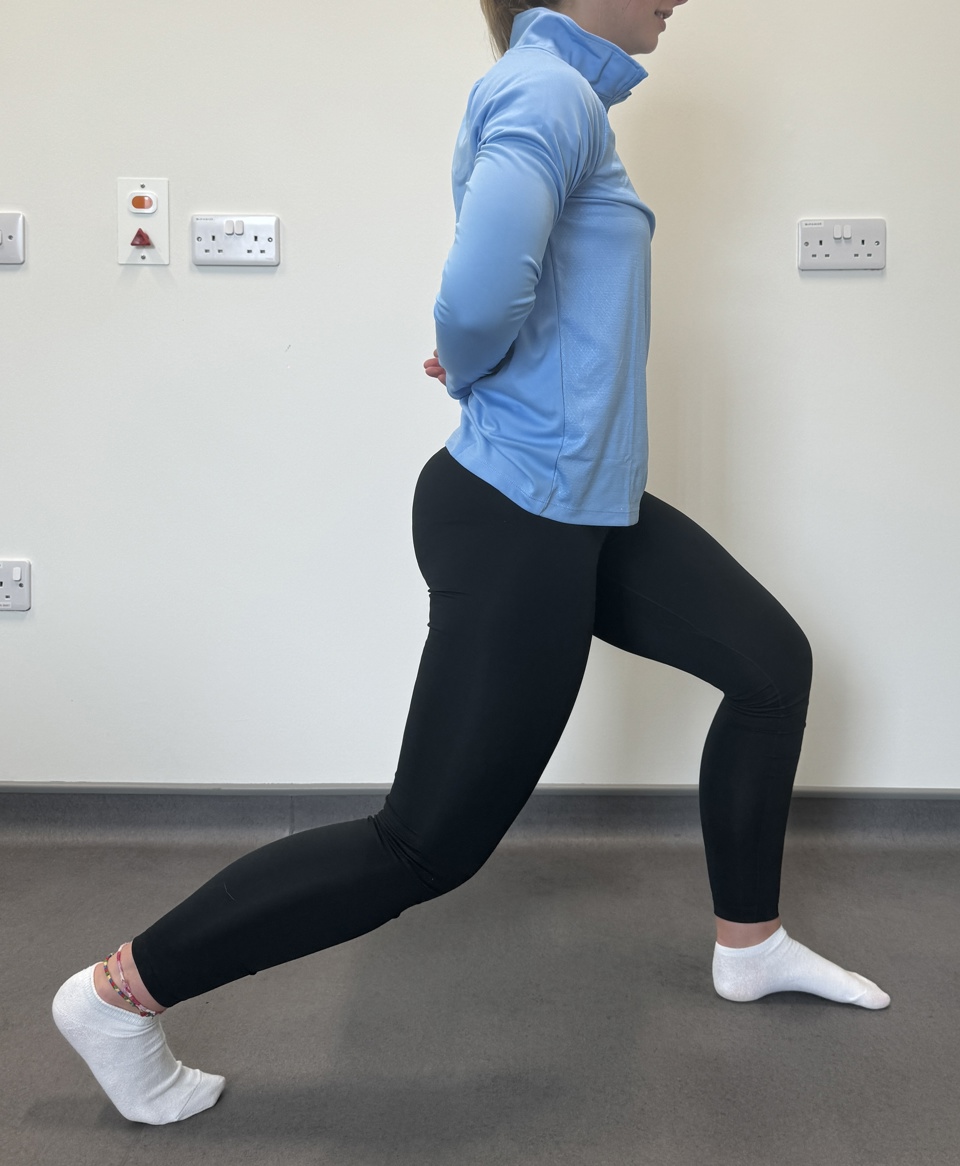
4. Hip Extensor Stretch
Stand with one leg in front of the other. Put most of your weight on to the front leg.
Drop the knee of the back leg toward the floor. Push your pelvis forwards.
Feel the stretch in the front of the hip of your back leg.
Hold 20 to 30 seconds.
Repeat 3 times.

5. Hip Extension Strengthening
Stand tall holding onto a chair.
Squeeze your buttocks and bring one leg back, keeping your knee straight.
Repeat 10 times, 3 sets.

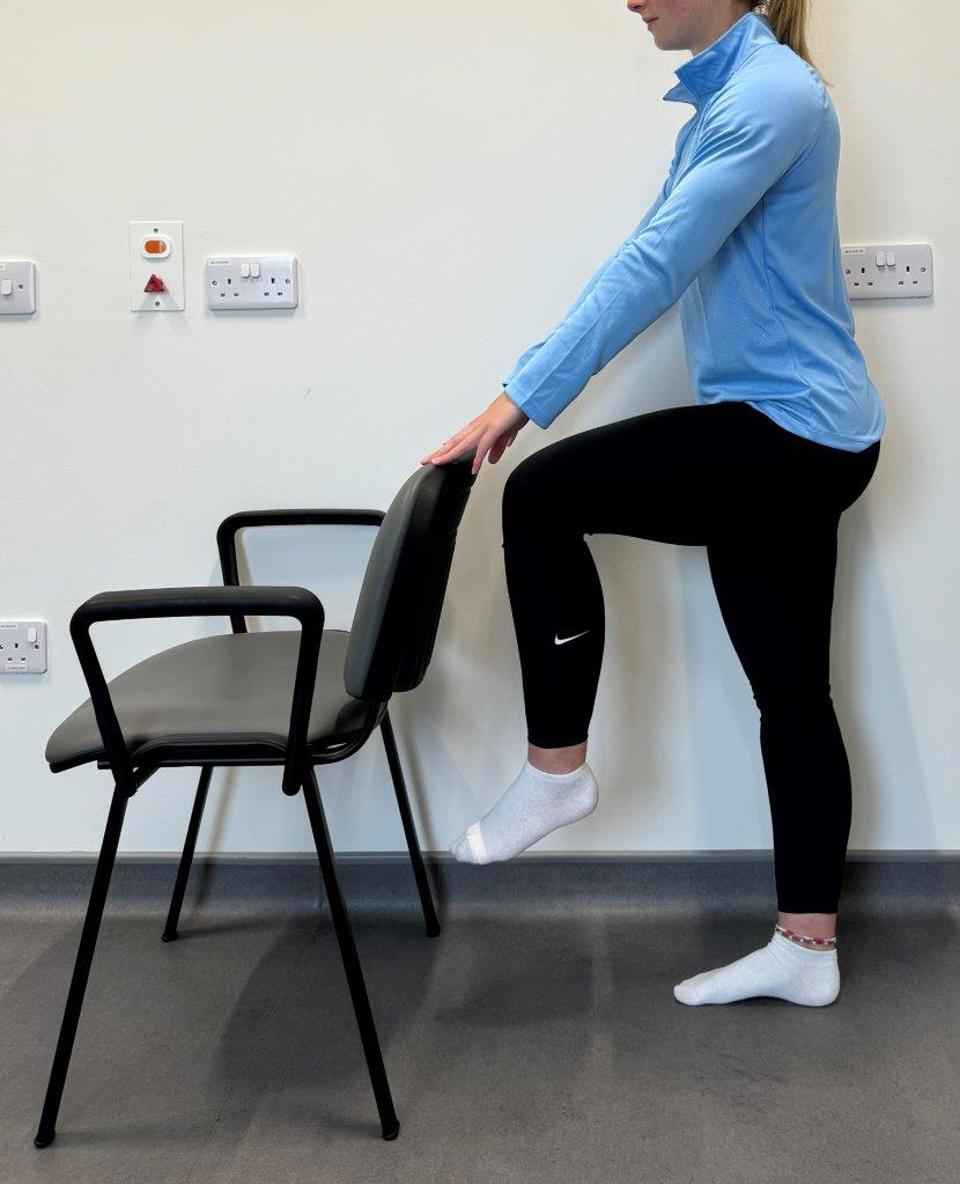
6. Hip Flexion Strengthening
Stand and take support if needed.
Lift one knee keeping your pelvis level. Return your leg to the starting position.
Repeat 10 times, 3 sets.
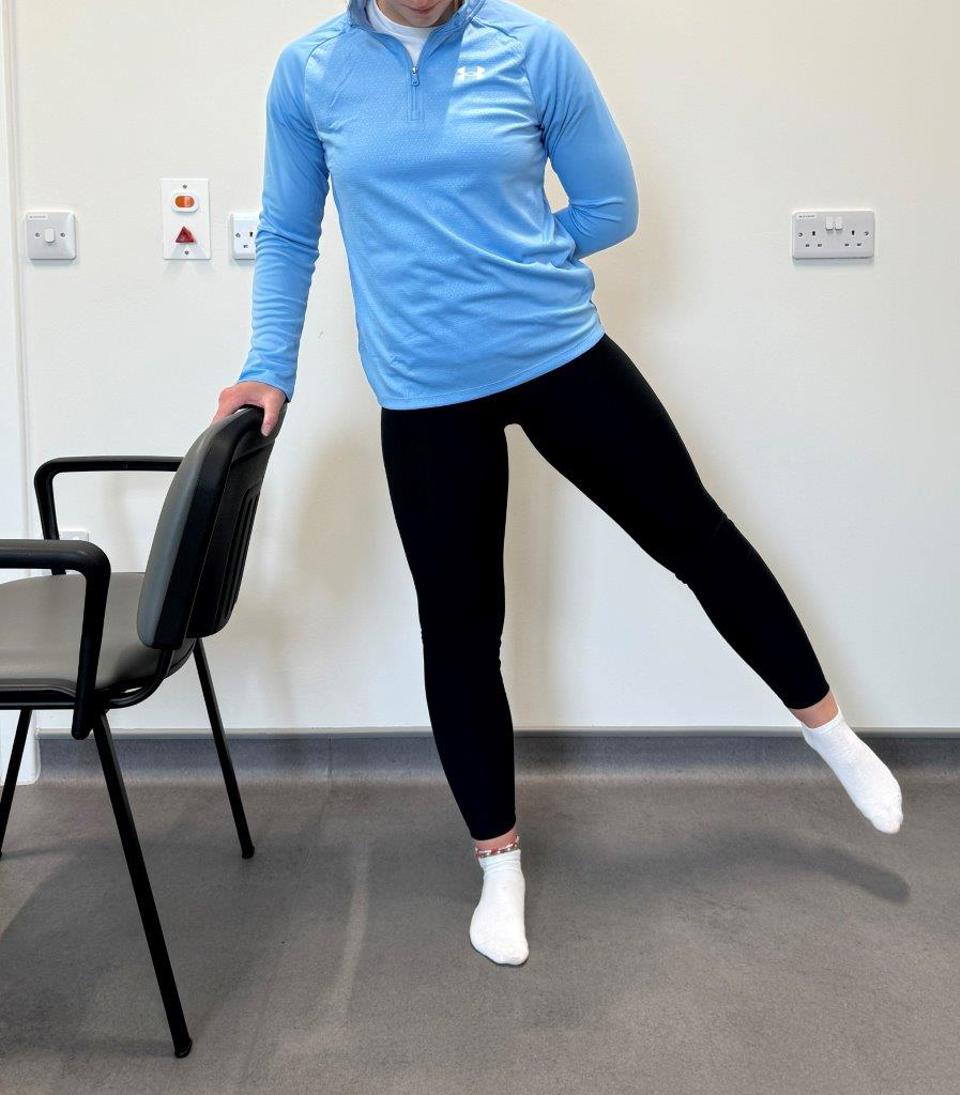
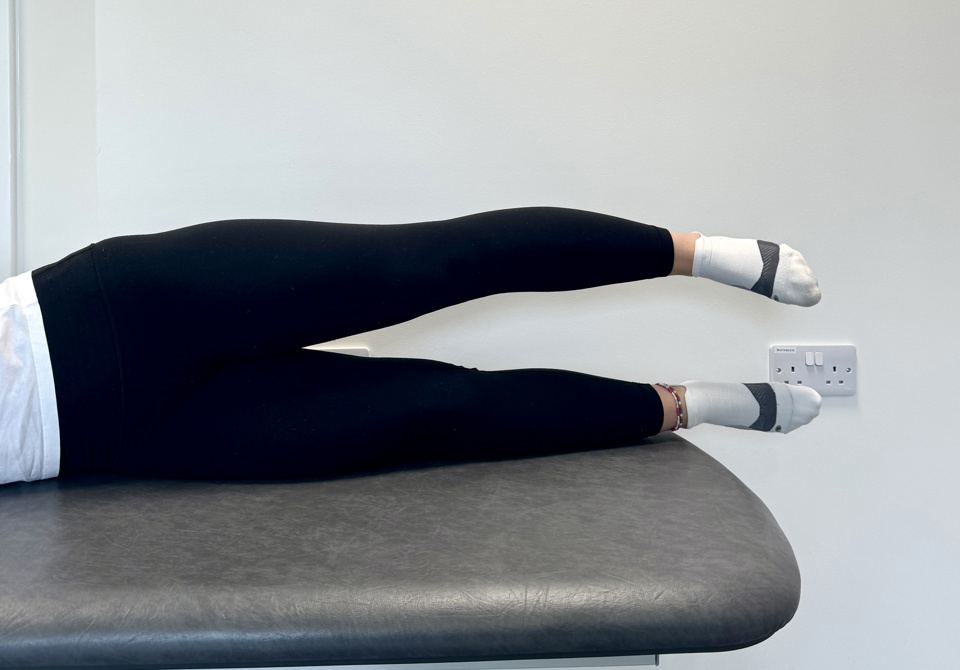
7. Hip Abduction Strengthening
Stand tall and take support if needed.
Lift your leg sideways and bring it back, keeping your trunk straight throughout the exercise.
Repeat 10 times, 3 sets.
Or if more comfortable
Lie on your side, with the lower leg bent and the upper leg straight.
Slowly lift the upper leg straight up with ankle flexed. Return to the starting position.
Rehabilitation Exercise Progression
Criteria for exercise progression
- Minimal or no pain.
- Good hip joint range of movement.
- Rehabilitation exercises feeling easy.
Aims
- Improve muscle strength.
- Improve range of motion and flexibility.
- Improve exercise tolerance.
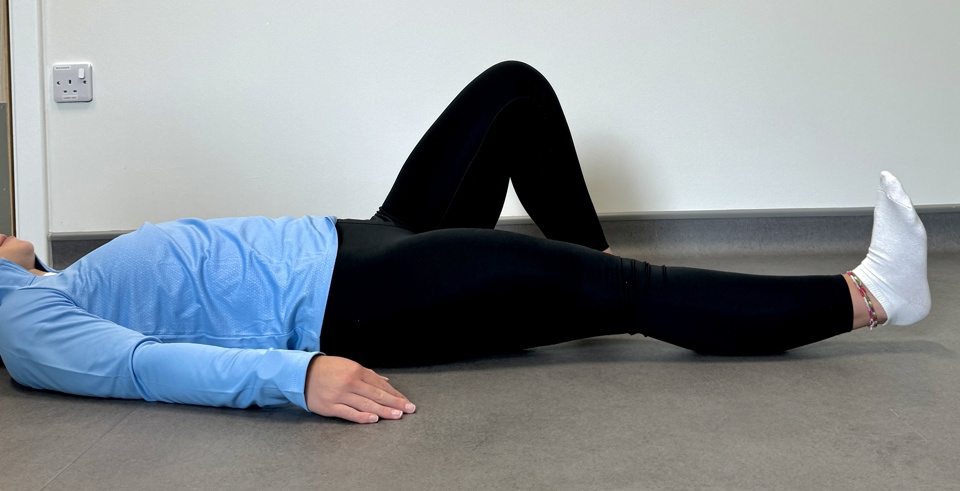
1. Hip Flexion Strengthening
Lie on your back with legs straight. Tighten your front thigh muscles and lift the straight leg off the floor about 6 to 10 cms keeping it straight. Hold for 5 seconds.
Lower the leg to the starting position in a controlled manner. Repeat 5 to 10 times, 3 to 5 sets.


2. Bridge
Lie on your back, with knees bent and feet hip-width apart. Tighten your buttocks. Lift your pelvis and back up hold 5 to 10 seconds. Lower your pelvis down in a controlled manner. Repeat 10 to 20 times. >



3. Single Leg Bridge (If no.2 is too easy)
Lie on your back with knees bent.
Squeeze your buttocks. Lift your pelvis and straighten one knee keeping your thighs in line, hold 5 seconds. Bend the knee, lower the foot on the floor and return to the starting position. Repeat 10 to 20 times. Do both sides.

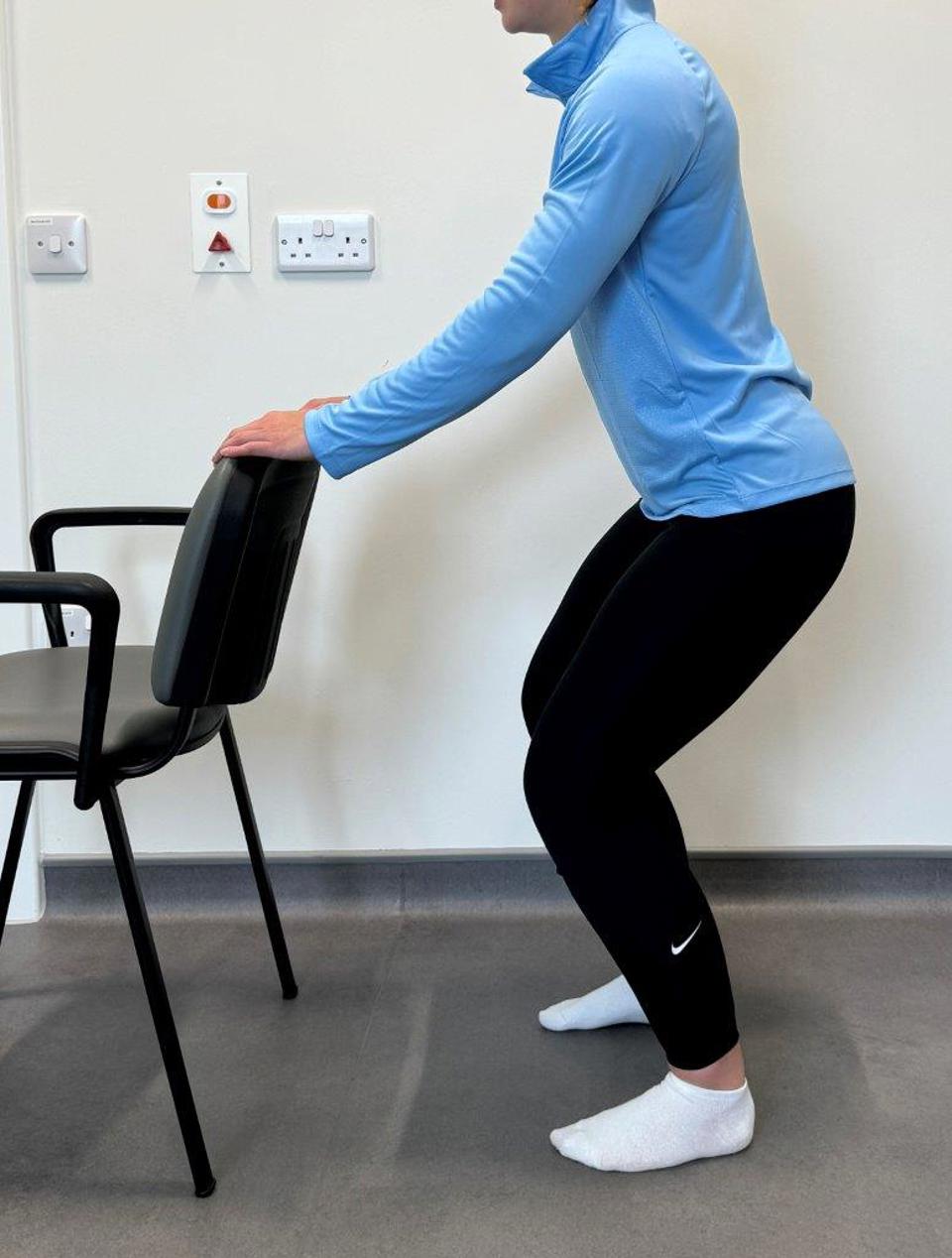
4 Shallow Squat – Use Support if You Need Help With Balance.
Stand tall with feet slightly wider than hip-width apart.
Squat down by sitting back and bring your arms forward.
Push back up through the heels, chest up, and straighten your hips.
Repeat 10 to 20 times.
Getting back to normal
Returning to activities of daily living
There are no specific timeframes regarding when you can return to activities of daily living. It is advised that you aim to gradually build up the exercises in this leaflet and then gradually return to activities as able. It is advised that you use the same guidelines regarding discomfort as for the exercises, i.e. discomfort should be at a level you consider to be manageable and should settle within 24hrs.
Guidance for returning to work
Research suggests that staying active and keeping moving as pain allows, will help you get better sooner. Getting back to work helps most people with back pain. If you are ‘signed-off’ work, time frames for returning to work will depend on the type of work you do and a healthcare professional can advise on this. It is advised you communicate regularly with your employer to facilitate a safe and timely return to work.
Useful Information
|
Information |
Link |
|
NHS Inform |
www.nhsinform.scot/illnesses-and-conditions/muscle-bone-and-joints |
|
The Chartered Society of Physiotherapy |
www.csp.org.uk/conditions/managing-your-bone-joint-or-muscle-pain |
|
Versus Arthritis |
Worries or concerns
Should you have any worries or concerns, please contact your GP during working hours or contact NHS24 on 111 out of working hours.
If you continue to experience problems then you should consult a healthcare professional.
Accessible formats
If you require this information in a community language or alternative format such as Braille, audio, large print, BSL, or Easy Read, please contact the Equality and Human Rights Team at: email: fife.EqualityandHumanRights@nhs.scot or phone 01592 729130. For people with a hearing or verbal impairment you can also contact the team through the NHS Fife SMS text service number on 07805800005.
